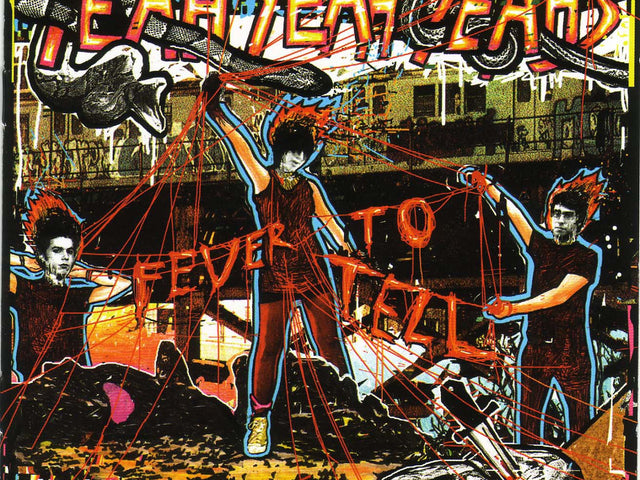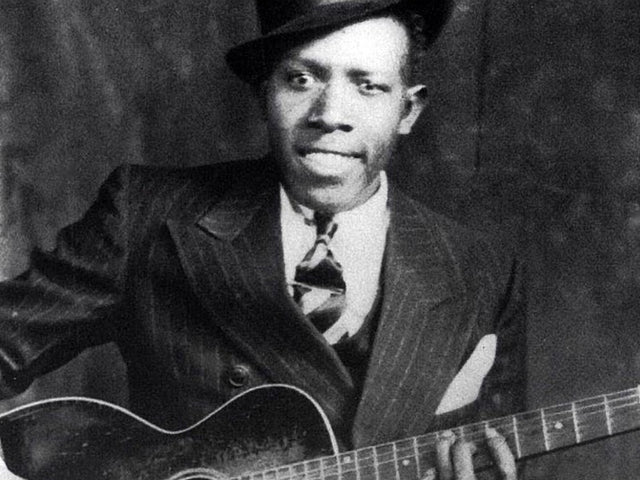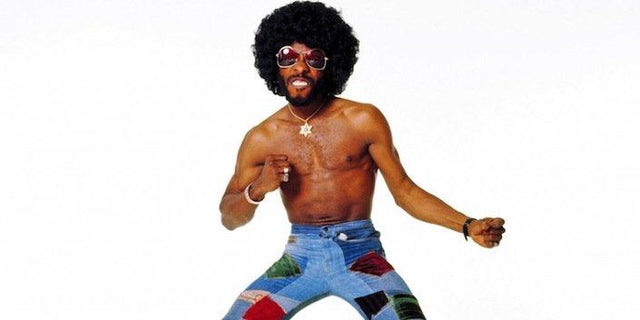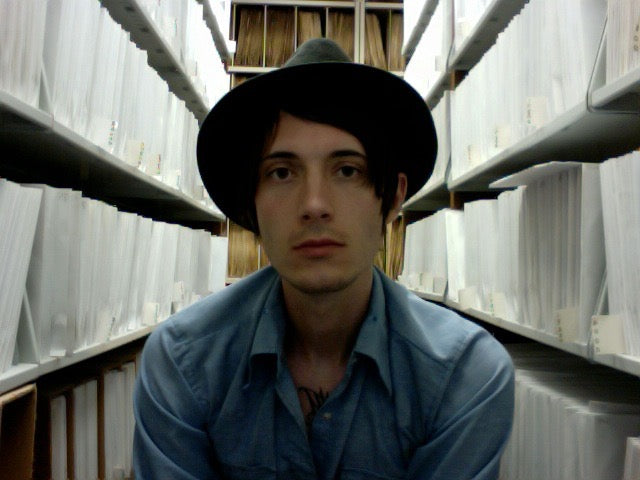Les 10 meilleurs albums de l'invasion britannique à posséder en vinyle
Le 7 février 1964, le vol 101 de Pan-Am Airlines, transportant les Beatles, a atterri à l'aéroport JFK de New York, déclenchant une chaîne d'événements qui allait définir l'invasion britannique. Si la folie incontrôlable qui a accueilli le groupe à leur arrivée - sous la forme de millions d'adolescents enragés et hurlants - était l'étincelle qui a allumé la mèche d'une nouvelle révolution musicale, alors la désormais légendaire performance du groupe dans le Ed Sullivan Show seulement deux jours plus tard était l'explosion qui a envoyé tout ce qui était longtemps sacré musicalement dans la stratosphère.
nIl est bien documenté que les Beatles et les Rolling Stones sont les groupes emblématiques de l'invasion britannique, mais qu'en est-il des autres Britanniques bien habillés qui ont débarqué aux États-Unis devant des hordes d'adolescents admirateurs ? Dans cet article, nous allons explorer les groupes et les disques qui ont émergé après l'ouverture des vannes musicales transatlantiques - certains obscurs, d'autres non - et pourquoi vous devriez commencer à construire votre collection de vinyles de la première vague de l'invasion britannique avec ces sélections qui n'incluent pas les Beatles ou les Stones.

The Animals: The Animals
Probably best to start here with what many believe to be the third most important band to the British Invasion genre. If the Beatles and Stones are George Washington and Abraham Lincoln (respectively) on the Mt. Rushmore of Invasion bands, then the Animals are definitely Thomas Jefferson.
They first hit in the states in the summer of 1964 with the single “The House Of The Rising Sun” which was recorded in one take at a small studio in London, between stops on a tour with Chuck Berry. A full-length album followed later that year on MGM Records, with lead singer Eric Burdon’s howling, pained vocal delivery on full display. Unlike anything American kids had heard before from a rock combo, the band rips through uptempo R&B based numbers on this release, and even manages to make a cover of Ray Charles’ “Talkin’ Bout You” sound desperate and tortured.

The Yardbirds: For Your Love
How the only British Invasion band to feature Eric Clapton, Jeff Beck, and Jimmy Page on guitar (at different times of course), is not a household name is beyond me. The Yardbirds took over for the Rolling Stones as the house band at the infamous Crawdaddy Club in England in 1963. Their name paid homage to American jazz icon Charlie “Bird” Parker, and their sound was a mix of fuzzed-out R&B, British beat, and reverb-drenched psychedelic pop.
Eric Clapton was their first axe-slinger, whose blues-purist ideals forced him to leave the band in the spring of 1965. He was replaced by Jeff Beck, with wunderkind session man Jimmy Page joining up shortly thereafter to play bass. Beck was sacked from the group in 1966, thus promoting Page to full-time lead guitar.
The For Your Love LP was released in 1965, as the band was preparing for their first tour of the states, and features Clapton and Beck on guitar. While most of the songs on the album are covers, the title track alone is a seminal piece of ‘60s pop songwriting, worth owning on vinyl.

The Kinks: The Kink Kontroversy
Master songwriter Ray Davies and his guitar slangin’ brother Dave were poised to break America in 1965 with their band the Kinks, but fate held other plans. Around mid-year in 1965, the American Federation Of Musicians banned the North Londoners from touring the United States for a term of four years.
On-stage antics in tours of other countries – including an episode in Wales where drummer Mick Avory brained Dave Davies with his hi-hat stand, knocking him unconscious – had given the Kinks a bad reputation, and thusly, they were prohibited from tapping into one of the most lucrative concert-going markets in the world.
This, coupled with Ray Davies’ constantly shifting songwriting style contributed to the Kinks never reaching Beatles or Stones level British Invasion superstardom. The Kink Kontroversy is their third studio album, released in November of ’65, and it’s one of their toughest. Snotty proto-punk jams “Milk Cow Blues,” “Where Have All The Good times Gone,” and “Til the End Of The Day” mix well with downer anthems such as “The World Keeps Going Round,” “I’m On An Island,” and “Ring The Bells.”

The Pretty Things: The Pretty Things
Dick Taylor is one of the founding members of the Pretty Things. He’s also the only man on earth to hold the distinction of being the original bass player of the Rolling Stones (then called the Rollin’ Stones), who quit the band to go to school.
This fact may lead you to believe that Taylor is somewhat of a square, but one spin of his second band’s debut album, and you can hear that it is def not the case. Taylor would eventually meet the musically like-minded Phil May at art school, and form the Pretty Things. Named after a Willie Dixon song, the band is deeply rooted in the electric blues and R&B tradition. Highlights include: “Honey I Need, “ “Rosalyn,” and “Road Runner.”

Them: Them
Unless you’re hard of hearing and/or don’t like music, you probably think Van Morrison has one of the most amazing voices ever given to a mortal man. And that’s precisely why his band (which actually hailed from Northern Ireland) is featured in this list of seminal British Invasion bands (sorry Dave Clark Five).
Them hit it big with their single “Gloria,” which was all over the charts and radio airwaves in late summer, 1964. The song has been covered by the likes of Jimi Hendrix, David Bowie, and every bar band from the years 1964 – present. This debut album is super tough with outsider anthems aplenty. “I’m Gonna Dress In Black” and “Here Comes The Night” being standouts. Also features inspired performances of classic R&B rave-ups such as “Route 66.”

The Troggs: Wild Thing
The Troggs are like the behavior kid in class who is constantly acting up for attention, but also possesses that soft, sensitive side you just can’t help but find endearing. First of all, Troggs is short for Troglodytes, which Merriam-Webster defines as: “a person who lived in a cave in prehistoric times.”
And while their first single - the appropriately named “Wild Thing” - sounds like it could have been played by a bunch of guys with two letter names who club their dinner to death, the rest of this debut album features some tender moments of perfectly written ‘60s pop, such as “With A Girl Like You” and “When I’m With You.”
The band went on to record a handful of albums that didn’t really do anything of note. Their ”The Trogg Tapes” LP is essentially a profanity-laced recording of the band arguing, which may or may not have influenced the guys that wrote “This Is Spinal Tap.”

The Who: The Who Sings My Generation
If you have any qualms about the Who having been at a time, one of the most dynamic, kick-ass rock bands on earth – let alone of the British Invasion – type “The Who Smothers Brothers My Generation” into the Google machine and watch the first video that pops up, all the way through. I’ll wait…
This debut US release from the band is packed with more dynamite than Keith Moon’s bass drum at the taping that day. Roger Daltrey and Co. even have the balls to take on not one, but two James Brown covers on this LP.
The Who Sings My Generation is a perfect time capsule of the swinging London mod scene that the band repped in the early days, and would go on to immortalized in their seminal film Quadrophenia.

Herman’s Hermits: Blaze
I don’t think there’s anything overtly special about the Herman’s Hermits catalog as a whole, and I also realize that 1967 is a bit late for a first wave British Invasion band’s record to be included on this list, but I’ll be danged if Blaze isn’t this particular band’s best album.
Here’s the deal: Herman’s Hermits were huge in the direct aftermath of Beatlemania, with breakout hits such as “I’m Into Something Good,” “Mrs. Brown You’ve Got A Lovely Daughter,” and “There’s A Kind Of Hush.” But they were so freaking clean and innocent. Whereas the Stones, Animals, and even Beatles to some extent had a bit of bad boy quality in them, Peter Noone and Co. were completely devoid of that, almost to a fault.
This album however, sees the band eschewing its clean cut, boy-next-door image, in favor of a more psychedelic chamber pop look and sound. Standout tracks: The Donovan-penned “Museum,” Beatles ‘Taxman” ripoff “Mr Moonshine Man,” and Simon & Garfunkel indebted “Last Bus Home.”

The Zombies: The Zombies
The story of the Zombies is one filled with missed opportunities, Stateside imposters, and internal strife. But one thing is for sure; this band had such a distinctly unique sound, that the acts they have inspired and influenced since their debut album was released in 1965 are innumerable.
The Zombies scored a deal with Decca Records after winning a battle of the bands contest and released their first single “She’s Not There” shortly thereafter. It would be one of their biggest selling hits, and this debut LP features a killer mix of the early original singles and uptempo R&B covers. Not to mention, lead singer Colin Blunstone’s smooth-as-butter voice is at full churn here – especially on the standard “Summertime.”
With the release of their psychedelic coup de grace Odessey And Oracle another two years out, The Zombies captures the effortless cool that the band exuded and personified in the early days of their short but seminal career.

Small Faces: Small Faces
Small Faces are the darkhorse on our list. The band you can casually bring up in conversation about the British Invasion, and be met with a chorus of “Who?” But the fact is, the band that would eventually morph into an incarnation featuring Rod Stewart on lead vocals, were one of the biggest selling bands of 1966.
Small Faces core members Steve Marriott, Ronnie Lane, Kenney Jones, and Ian McLagan made organ-driven mod music with a hard edge. This self-titled debut LP from the band opens and closes with a bang; a killer cover of Sam Cooke’s “Shake” and the big money track “Sha-La-La-La-Lee” (which I will personally not go without at any deejay night). It also features their first single “Watcha Gonna Do About It.” The band would go on to dabble in psychedelia, and release their best-known single “Itchycoo Park” just a year later, but this early stuff is where it’s at for me.
Jeffrey David Harvey is a record collector/archivist/music historian who focuses most of his time looking for lost and forgotten music at thrift stores, garage sales, and junk shops. You can check out his latest finds at on his Twitter and Instagram. He also runs lostrpm.blogspot.com for those who prefer nostalgia in their internet surfing.
Related Articles
Rejoindre le club!
Rejoignez-nous maintenant, à partir de 44 $15 % de réduction exclusive pour les enseignants, les étudiants, les membres des forces armées, les professionnels de la santé & les premiers intervenants - Faites-vous vérifier !







